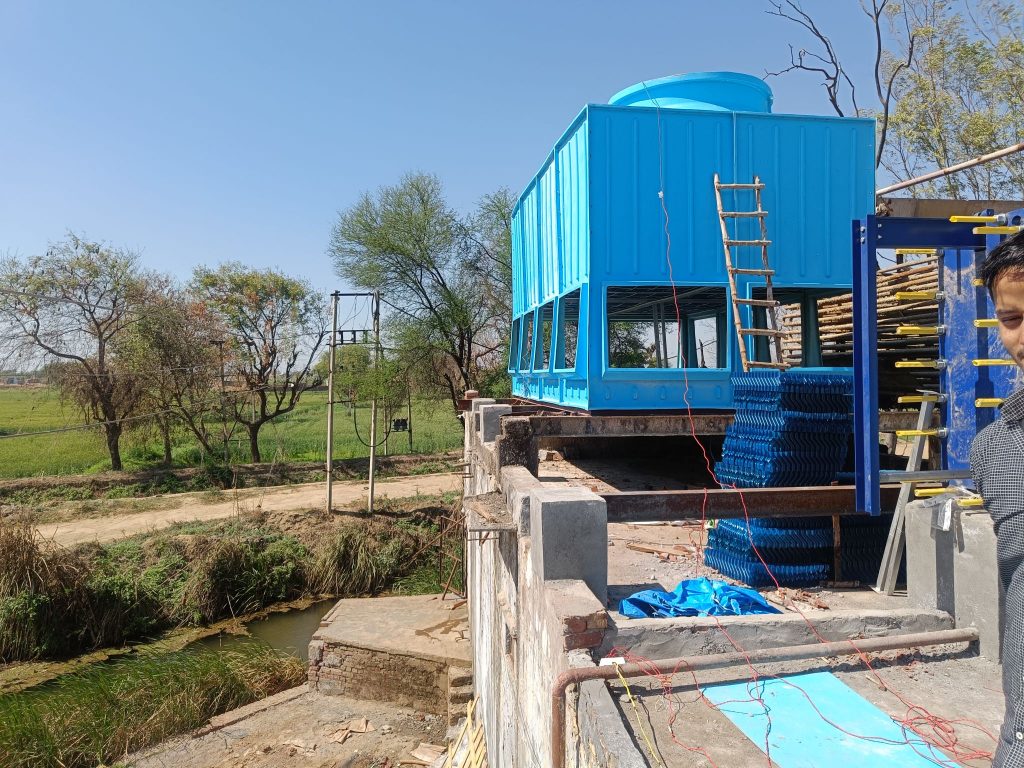Use of Cooling Towers in the HVAC Industry
Cooling towers are a critical component in large-scale Heating, Ventilation, and Air Conditioning (HVAC) systems, particularly in commercial, industrial, and district cooling applications. They help reject heat absorbed by chilled water systems, ensuring efficient temperature control. Below is a detailed breakdown of their role in HVAC:
1. Primary Function in HVAC Systems
Cooling towers remove heat from the condenser water loop in water-cooled chiller systems. Here’s how they work:
- Chillers absorb heat from building air (via evaporators) and transfer it to condenser water.
- The hot condenser water (typically 95–110°F / 35–43°C) is pumped to the cooling tower.
- The cooling tower cools this water by evaporative cooling (wet towers) or air cooling (dry/hybrid towers).
- The cooled water (now ~85–95°F / 29–35°C) returns to the chiller’s condenser, completing the cycle.
2. Types of Cooling Towers Used in HVAC
A. Open (Evaporative) Cooling Towers (Most Common)
- Water is exposed to air, allowing partial evaporation for cooling.
- Types:
- Crossflow – Air flows horizontally, water falls vertically.
- Counterflow – Air moves upward against falling water (more efficient).
- Used in: large office buildings, hospitals, data centres, and industrial HVAC.
B. Closed-Circuit Cooling Towers (Fluid Coolers)
- Process fluid (e.g., condenser water or refrigerant) flows inside a coil, while spray water cools it externally.
- Advantages:
- Prevents contamination (no direct air-water contact).
- Lower maintenance (less scaling/fouling).
- Used in: Sensitive environments (hospitals, labs, data centres).
C. Dry Cooling Towers (Air-Cooled)
- Use fans and finned heat exchangers (no water evaporation).
- Advantages:
- Zero water consumption.
- No risk of Legionella (bacterial growth).
- Disadvantages:
- Less efficient in high ambient temperatures.
- Used in: Water-scarce regions or where water restrictions apply.
D. Hybrid Cooling Towers
- Combine wet and dry cooling for efficiency and water savings.
- Used in: large district cooling plants and energy-efficient buildings.
3. Key Benefits in HVAC Applications
- Energy Efficiency – Cools condenser water, reducing chiller workload (saves electricity).
- Water Conservation – Recirculates water instead of using once-through systems.
- Scalability – Supports large buildings, campuses, and district cooling networks.
- Lower Operating Costs – More efficient than air-cooled chillers in hot climates.
4. Common HVAC Applications
- Commercial Buildings (Skyscrapers, malls, airports)
- Hospitals & Laboratories (Precise temperature control needed)
- Data Centres (High heat rejection requirements)
- Industrial Facilities (Manufacturing plants with process cooling needs)
- District Cooling Systems (Centralized cooling for multiple buildings)
5. Challenges & Considerations
- Legionella Risk – Wet cooling towers can breed bacteria if not maintained properly (requires water treatment).
- Water Consumption – Evaporative towers lose water (~1-2% of flow rate).
- Maintenance Needs – Scaling, fouling, and corrosion require regular cleaning.
- Climate Impact – Efficiency drops in high humidity (reduced evaporation).
6. Comparison: Cooling Tower vs. Air-Cooled Chillers
| Feature | Cooling Tower + Water-Cooled Chiller | Air-Cooled Chiller |
| Efficiency | Higher (better COP) | Lower |
| Water Use | Yes (evaporation loss) | None |
| Footprint | Larger (tower + chiller) | Compact |
| Maintenance | More (water treatment needed) | Less |
| Best For | Large buildings, hot climates | Small/medium systems, dry climates |
Cooling towers are essential for large, energy-efficient HVAC systems, providing superior heat rejection compared to air-cooled alternatives. They are widely used in commercial, industrial, and district cooling setups, offering better efficiency but requiring water management and maintenance. The choice between wet, dry, or hybrid cooling towers depends on water availability, climate, and system requirements.
